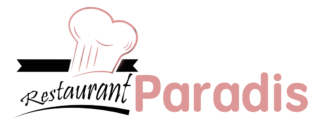Do you ever wonder what is in your food? Perhaps you’re becoming more conscious of what you eat and want to make sure you are purchasing the right foods that can meet your nutritional needs? In these scenarios, you can find it useful to know about the FDA requirements for food labeling.
But, what are the FDA food labeling regulations? If you know what should be on the label, you can check you are buying products from reputable manufacturers that stick to the rules. Fortunately, you can create a food labeling guide checklist to make sure you can find all the information you need on your product labels.
Let’s dive in and learn more about FDA food labeling requirements.
Supplier’s Name and Address
You should be able to identify the name and address of the manufacturer, packer, or distributor on the label. This is important as you can then find their contact details if there is a problem with your food. If a product is not manufactured in the US, the country of origin will also be included in this section.
Ingredients
This is possibly the most important section on food labels, and you’ll want to be able to view the ingredients. However, you should also be aware of ingredients that are on the GRAS list as these may not be evaluated or approved by the FDA. You can learn what is the GRAS list and decide if there are ingredients you might want to remove from your shopping list.
Nutrition Facts
Food labels should provide you with enough nutritional information to determine if they provide sufficient benefits for your health needs. For example, if you are on a high protein diet, you’ll want to know how much of this nutrient is in the products you are interested in buying.
This information also allows you to compare foods, helping you to choose the ones that have the most nutritional benefit.
Allergens
The eight allergens that must be noted if they are in a product’s ingredients are milk, egg, fish, crustacean shellfish, tree nuts, wheat, peanuts, and soybeans. If you, or someone you are cooking for, have an allergy, this will be a vital section.
Create Your Handy Food Labeling Guide
By referring to a food labeling guide, you can confirm suppliers have included all the relevant information on their packaging.
The manufacturer’s, packer’s, or distributor’s, name and address should be prominent, and you should be able to easily find out which ingredients are in your product. There must also be nutritional data, and a statement advising if there are ingredients that may be unsuitable for people with allergies.
By reading well-labeled products, you can get all the information you need before making a purchase.
If you’ve found this article helpful, be sure to check out more great posts in our Food section before you go.




